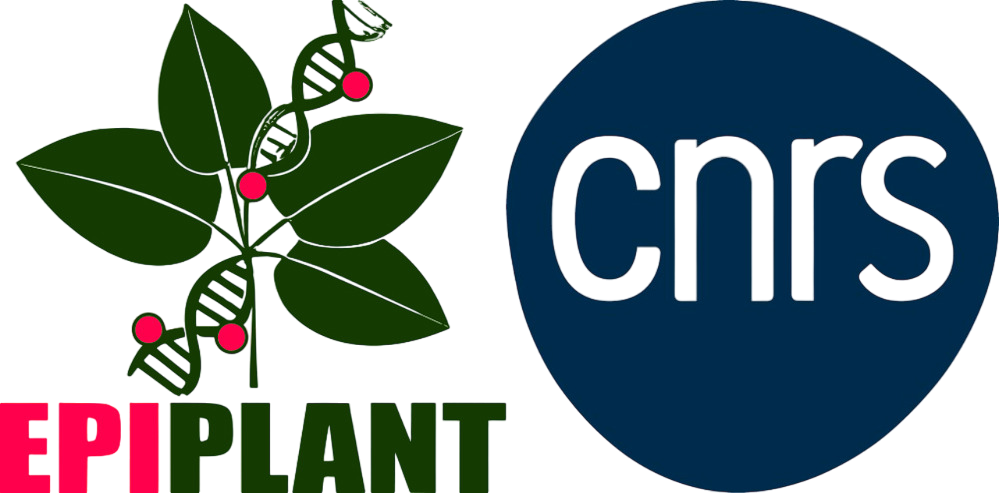The GDR EPIPLANT is organized in four research axes
Technology development
Coordinators : M. Benhamed, A. Probst and L. Quadrana
Advances in genomics and epigenomics have made it possible to characterize the mechanisms of epigenetic regulation, to explore the 3D organization of genomes, the abundance and localization of RNAs, and to precisely identify the epigenetic marks present in a given chromatin region. Despite these advances, the dynamics of epigenetic mechanisms are often difficult to capture with available methods and due to technical reasons our current knowledge is often based on averaged data, which fails to account for variability between the different cells of a tissue or within a population of single-cell organisms. To overcome these challenges, research teams of the GDR EPIPLANT develop novel methodologies, for example to:
- Characterize the transcriptomes and epigenomes of single cells.
- Modify precisely the genome or epigenome.
- Map simultaneously DNA or RNA sequences and their modifications.
- Visualize single DNA or RNA molecules, and to quantify dynamics of chromatin organization with high-performance image analysis methods using deep-learning approaches.


Chromatin dynamics
Coordinators : F. Barneche, C. Carles and O. Mathieu
In eukaryotes, the acquisition of cellular identity and developmental transitions requires coordination of gene expression, depending on different mechanisms converging at the level of chromatin. Using the most recent methodologies, such as those developed in Axis 1, the GDR EPIPLANT research teams set up multiscale approaches enabling an integrated view of chromatin dynamics and the specificities of each genome by exploiting several plant or microalgal model species and meta-(epi)genomic approaches using natural samples.
Members of the GDR EPIPLANT study in particular:
- Deposition pathways of different histone variants and other chromatin proteins.
- The influence of chromatin marks on the transcriptional activity of genes and transposable elements.
- The mechanisms ensuring the heritability of chromatin structure and epigenetic marks (on DNA and histones) during cell divisions and generations.
- The physical and genetic interactions defining genome topology at the nucleosome, chromatin fiber, and nucleus levels and their influence on the activity of the corresponding genomic subdomains.
Non-coding RNA and epitranscriptomics
Coordinators : T. Blevins, M. Crespi and G. Moissiard
The regulation of gene expression is an essential component in the arsenal of pathways controlling plant development and responses to environmental stresses. Among the many molecular factors involved in these different mechanisms, short and long non-coding RNAs (ncRNAs) represent a significant part of the plant cell transcriptome.
Members of the GDR EPIPLANT focus on deciphering the molecular mechanisms of biogenesis and the modes of action of small and long ncRNAs, on the one hand in chromatin remodeling and epigenetic regulation, and on the other in co-transcriptional mechanisms such as mRNA splicing and epitranscriptomics. The combination of genomic approaches, including the development of bioinformatics, genetic and biochemical tools (see Axis 1), will not only improve our knowledge of the functions of ncRNAs in epigenetic regulation in photosynthetic organisms, but also identify new long ncRNAs that often derive from repeated genomic sequences such as transposable elements.
Research of the EPIPLANT teams will specifically focus on:
- Identification and characterization of new ncRNAs.
- The study of ncRNA biogenesis and their interplay with the epigenetic machinery.
- Dynamics and trafficking of ncRNAs and their effectors to dissect how ncRNAs may act at long distance.
- Role of RNA modifications in gene expression control.


Epigenetics and adaptation to climate change
Coordinators : M. Benoit, N. Bouché, A. Déléris and C. Duc
Plants have the potential to memorize environmental cues in the form of epigenetic information. In the context of climate change, terrestrial and marine photosynthetic organisms are exposed to rising temperatures, drought, the emergence of new pathogens, and the disruption of their beneficial interactions with microorganisms. It is therefore essential to determine the contribution of epigenetics to the response to climate change, as well as the mechanisms of transgenerational memory in photosynthetic organisms with very different habitats or ecological and geochemical contexts. GDR EPIPLANT teams aim to characterize the dynamics of epigenetic marks in response to various stresses and to determine the extent to which stress-induced epigenetic changes are heritable, and whether they can represent a source of variability involved in natural selection and potentially mobilizable in agronomy.
The GDR EPIPLANT research teams will address in particular:
- The mechanisms that allow the acquisition and maintenance of epigenetic variability.
- The environmental signals (biotic and abiotic) perceived by photosynthetic organisms and how they induce epigenetic modifications.
- The role of transposable elements in the induction and maintenance of epigenetic changes.
- The epigenetic memory, triggered in response to an environmental stimulus, and whether it can create more adaptive epivariants.
